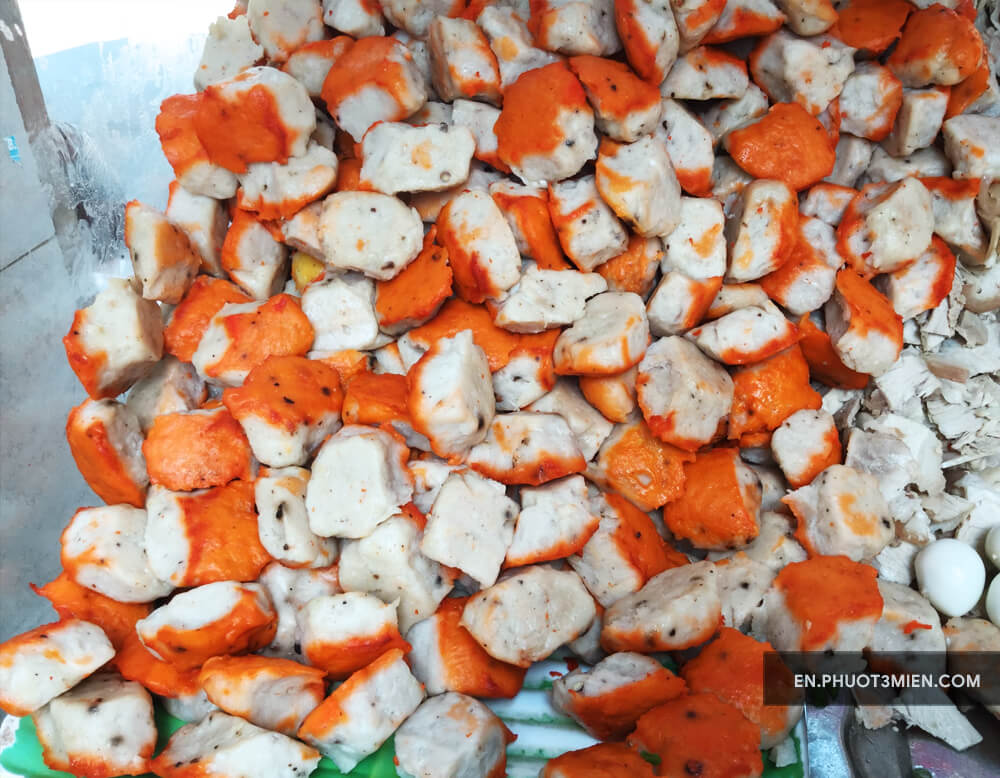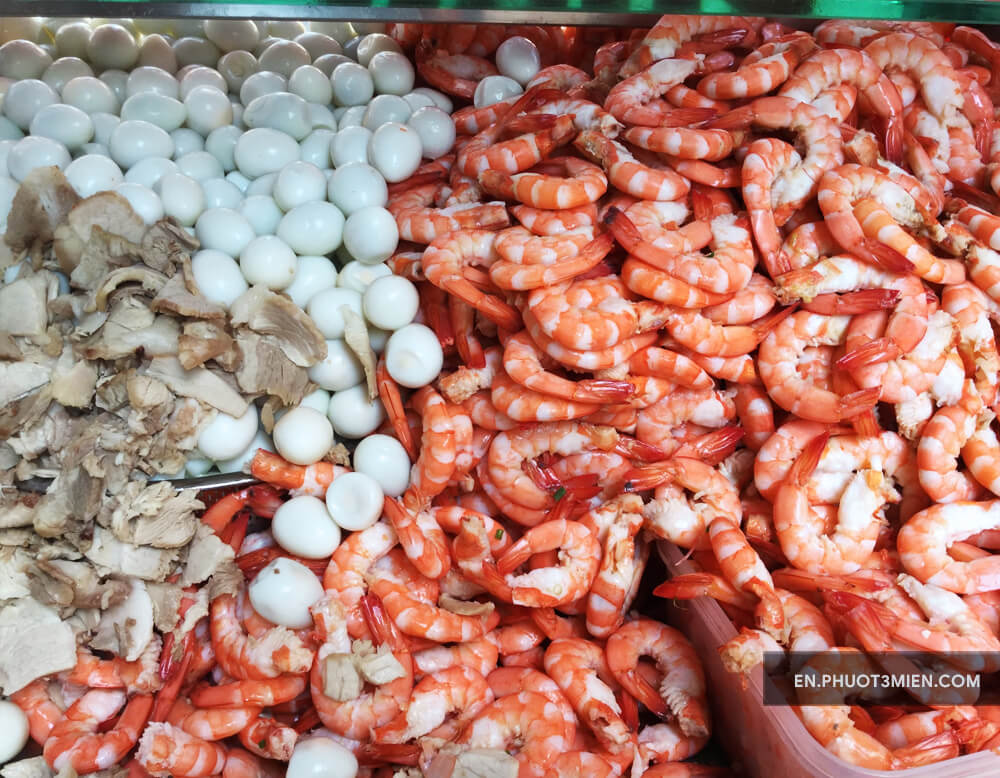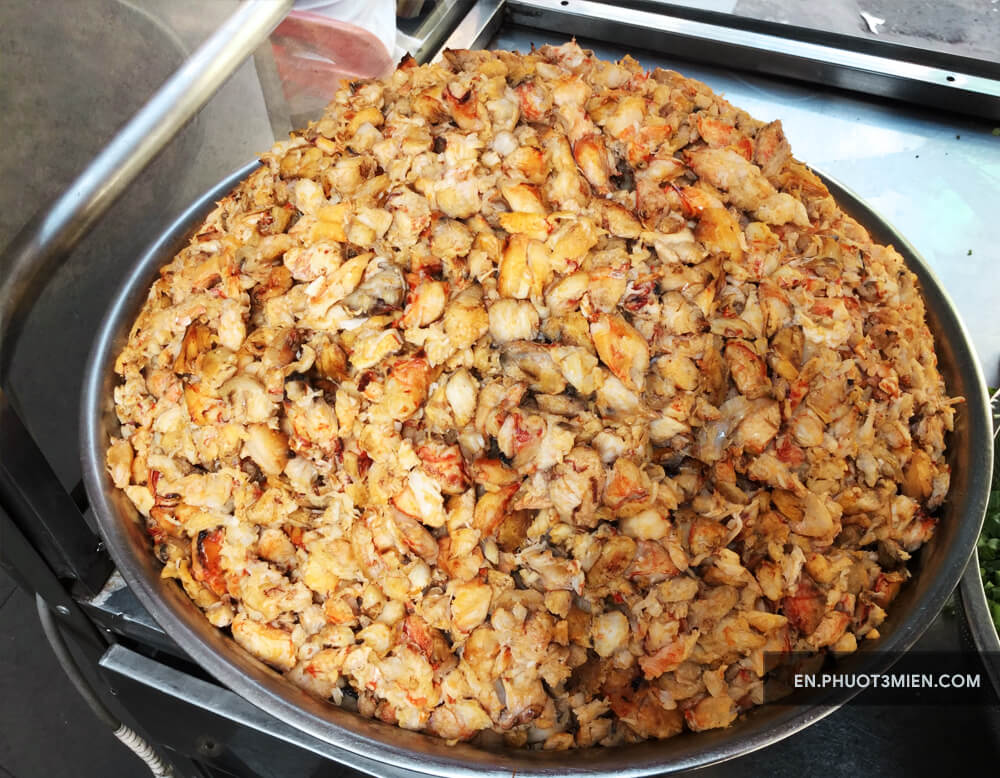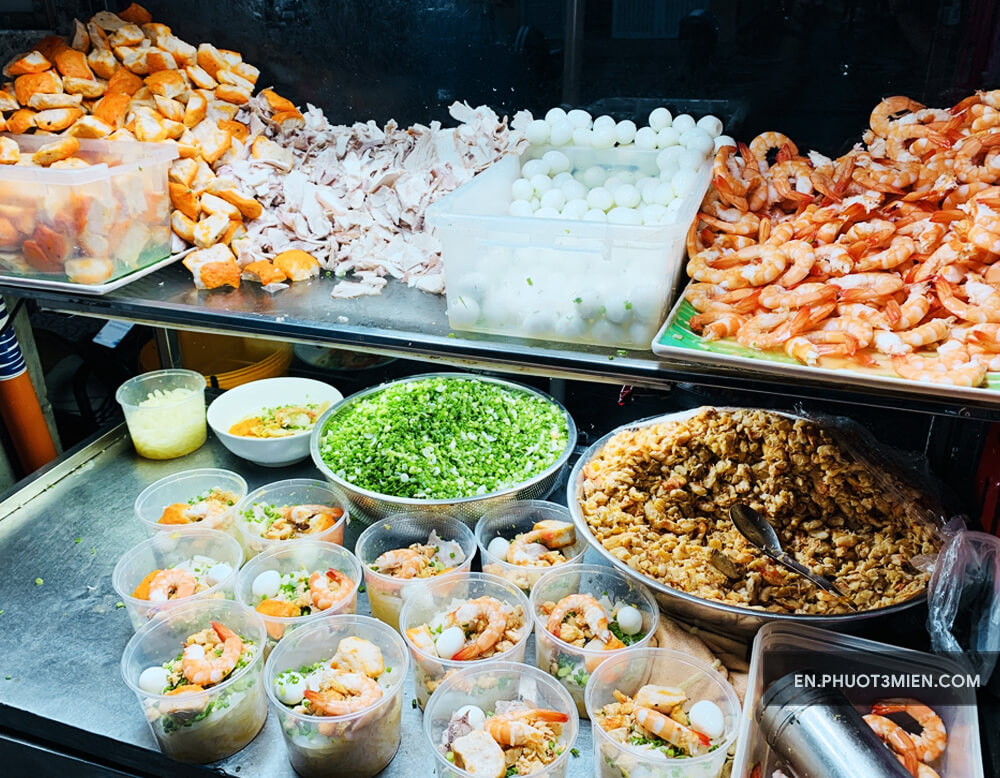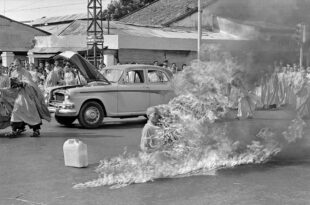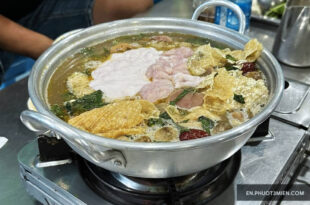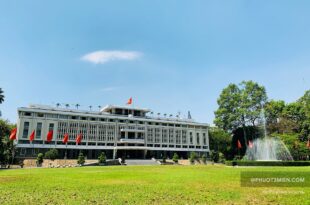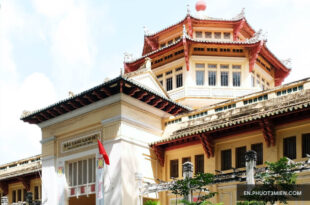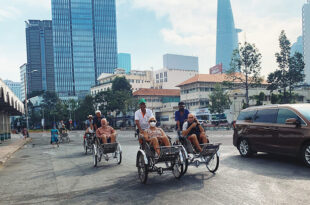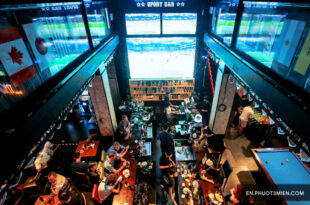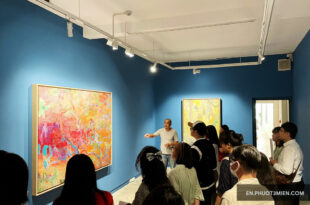Crab Tapioca Noodle (Banh Canh Cua) | 87 Tran Khac Tran
If you find yourself becoming bored with the endless bowls of pho and hu tieu nam vang in Saigon, it’s not the end of the world. In fact, this is exactly what is needed to launch an expedition into the medley of Vietnamese soups out there. Cue in Crab Tapioca Noodle (banh canh cua), a hearty stock made with chewy tapioca noodles and crab.
What is Banh Canh Cua?
When it comes to breaking down most soup combinations in Vietnam, the formula usually follows suit: name of noodles + style of preparation. The chewy tapioca noodles are the banh canh, while cua stands for crab. But crab isn’t the only thing swimming around in this vibrant orange broth; you actually get a wide array of seafood.
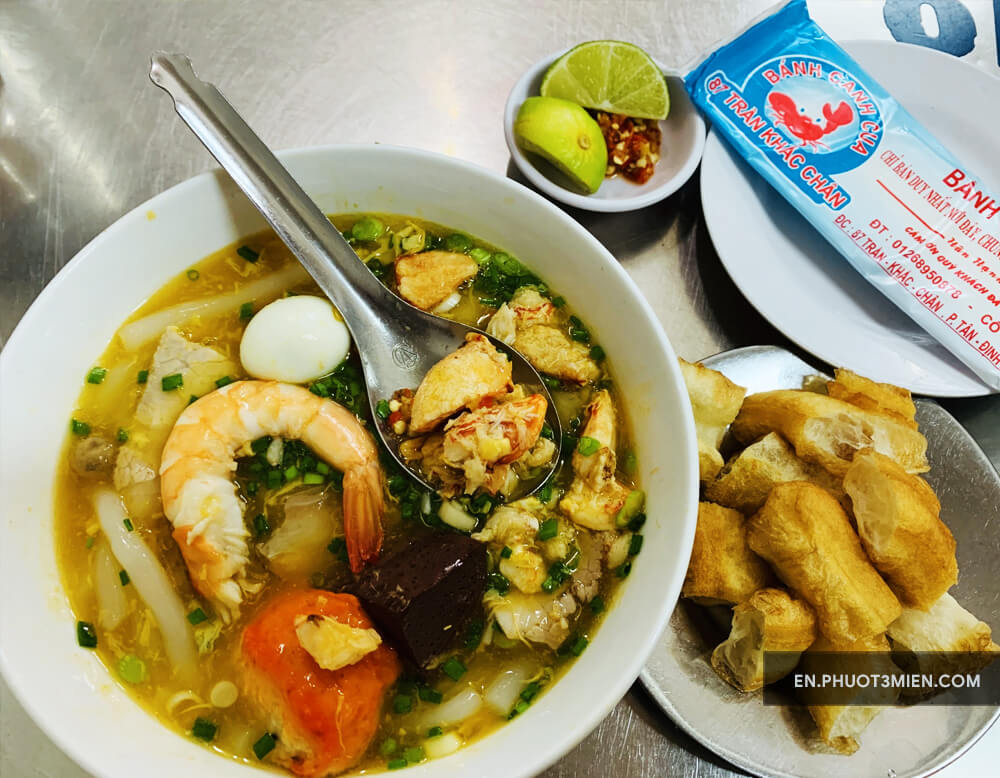
Crab makes an appearance twice in this dish, in the form of de-shelled crab meat and a spongy crab meatball. You’ll also see a plump prawn pre-skinned —fyi: most prawns in Vietnam are served with their shell intact—a small quail egg bobbing around, some straw mushrooms, thin slices of boiled pork, and both the chopped stalk and stems of green onions, which have two noticeably distinct flavors, believe it or not.
The tapioca noodles, which are heftier and chewier than plain old rice noodles, closely resemble Japanese udon noodles, except they are made from tapioca starch instead of wheat flour. The starchiness of the banh canh noodles gives the broth a thicker consistency, almost to the point of a watered down gravy. Even with the added density, it still has a subtleness when going down, a perfect balance of soup and stew.
The Best Crab Noodle (Banh Canh Cua) in Saigon
Banh canh cua is unique to Saigon and is a must when traveling through southern Vietnam. In the epicenter of one of District 1’s main food streets is a small corner shop called Bánh Canh Cua Trần Khắc Chân. Get up close and see “the auntie,” the all-encompassing name for most female street food chefs, stirring up two vats of the fiery-tinged stock. The soup’s blazing orange color comes from the natural coloring of shrimp and crab meat and is further saturated with drops of golden-yellow annatto oil. One vat has the noodles passively thickening the soup into a stew, while the other tank is the broth with just the proteins.
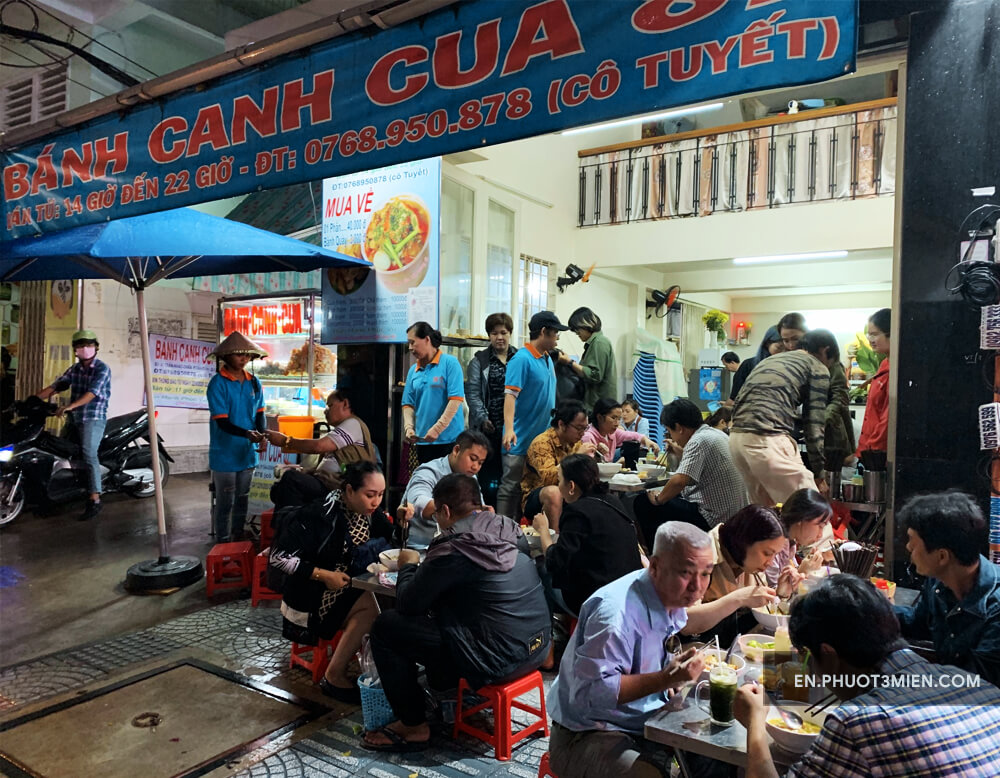
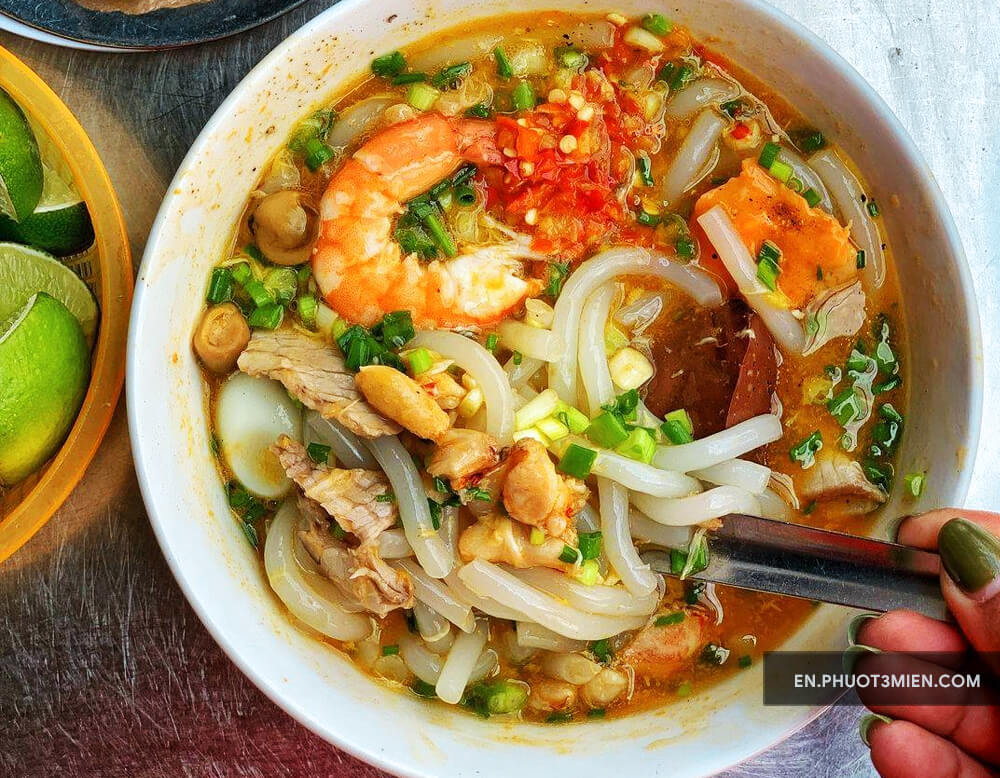
The store was already at capacity when we arrived at 4 PM, about two hours after the shop normally opens. I couldn’t imagine what this place looks like during peak hours. Lucky for consumers, the shop offers all their soup in takeaway form. Since Vietnam is a nation of motorcyclists, fast food in Vietnam is much more literal than in Western countries. Motorists drive up to the curb, bark their order to the madam manning the stove, and she signals her staff to bring a bag full of soup and packaged noodles to the driver. Drive by street food orders: one of Vietnam’s greatest inventions. The tile-floor of this one room restaurant extends out onto the sidewalk, with the tables nearly spilling onto the street. If you’re a fan of fully immersive dining experiences, you’re in for a real treat at Banh Canh Cua Tran Khac Chan.
How to Eat Crab Noodle (Banh Canh Cua)
Banh canh noodles taste best when slurped! Don’t nosh on the noodles, they easily vacuum up into your mouth and promise, there won’t be any resistance. Just be careful of splashing the broth all over yourself when slurping because of the orange soup stains. Even worse, if you added chili to the bowl, it will sting like no other if it gets into your eyes.
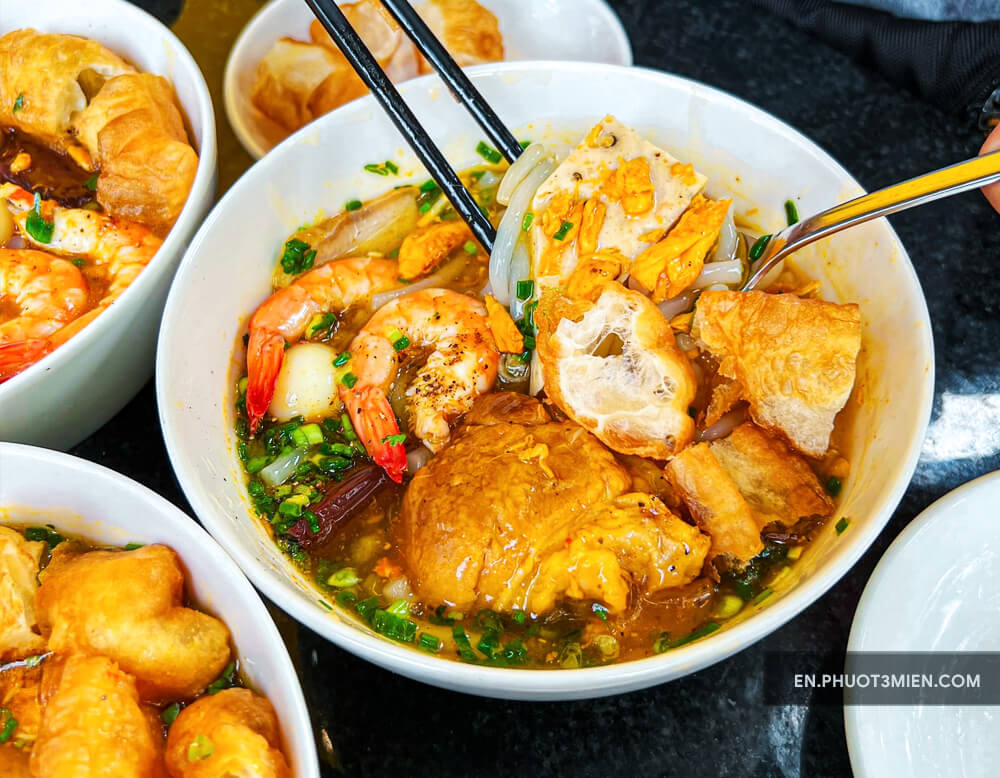
The servers will bring out a plate of Chinese donuts, called banh quay in Vietnamese, but they aren’t complimentary. One side dish goes for 3,000 VND but that price gets you a mountain of quay, more than enough for two diners. These lightly salted sticks of fried dough are for dipping into your soup. Let it soak up all the flavors and then nibble on the soggy sticks between bites of noodles. Another way to eat the quay is to break the sticks into small chunks and sprinkle them into your soup, like fat, fluffy croutons. But don’t wait too long to eat them, they get stale pretty fast.
Our Advice for Eating Crab Noodle (Banh Canh Cua)
It’s a boldly briny soup so if you’re not a big fan of seafood, this might not hit the spot. Also, do not eat banh canh cua without the banh quay, the fried dough sticks. The quay helps to balance the strong flavors. Try to get there before 6 pm or you will be forced to take the soup to-go, sans the banh quay, missing out on a big part of the experience.
Shrimps and eggs are important components.
General Information
Dish’s name: Banh Canh Cua
Price: 30,000 VND – 40,000 VND
Opening time: 2:30 PM – 8:30 PM
Address: 87 Tran Khac Chan, District 1
KKday is a travel APP platform offering over 20,000+ online products such as: tickets for amusement parks, outdoor services, sightseeing tours, culinary experiences, transportation, accommodation, courses, and local culture... Currently, there is a summer promotion with discounts up to 50% and coupons up to 250K VND off.

Attractive discount codes such as: 100K VND off for new accounts, 150K VND off summer promotion, 250K VND off, KKday birthday celebration...
Fanpage: https://www.facebook.com/banhcanhcua87
Read more:
Saigon Street Food: Broken Rice (Com Tam)
Saigon Street Food: Cambodian Sweet Soup (Che Campuchia)
Saigon Street Food: Vietnamese Pizza
Enjoyed this article and want more fun information on what to see, do, and eat in Vietnam? Follow us at Travel Blog!
